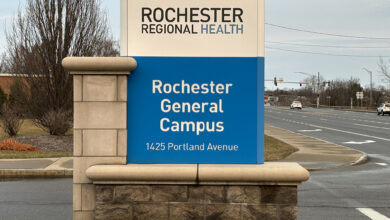- Age-related Macular Degeneration (AMD) and Diabetic Macular Edema (DME) are chronic, progressive retinal diseases; if untreated, can progress to irreversible vision loss
- Routine screening, especially for diabetics and the elderly, is key to enabling timely diagnosis and disease management.
- Non-adherence to treatment remains a critical barrier to overcome to sustain treatment benefits
Bengaluru, October 22, 2021: COVID significantly disrupted access to timely care for a lot of medical conditions including retinal diseases. Age-related Macular Degeneration (AMD) and Diabetic Macular Edema (DME), two common retinal diseases, form the leading causes of vision loss and blindness worldwide.[1] Both AMD and DME are chronic, progressive retinal diseases that can be effectively managed with early detection and treatment adherence.
Many ophthalmologists in India have been unable to see patients over the last year, with centers in India reported as high as a 98.7% decrease in treatment uptake, attributed to limitations with hospital infrastructure and public transportation.[2] New as well as old patients, seeking in-clinic treatment have drastically reduced over the year.[3] Additionally, several patients with eye diseases sought help at advanced stages, wherein they were unresponsive to treatment.
Understanding the Signs and Symptoms
Considering the progressive nature of AMD and DME, it is also important to understand signs and symptoms so individuals can promptly consult a doctor.
Dr. Chaitra Jayadev, senior vitreo-retinal consultant, Narayana Nethralaya Eye Institute, Bangalore said, “Roughly three fourths of patients walking into our clinic have diabetes. Across India, diabetic retinopathy affects 20 – 28% of the population, out of which 10% have sight-threatening conditions like macular edema or proliferative diabetic retinopathy. Although we’ve noticed a trend of low healthcare seeking behaviour, the younger population of 25-to-35-year-olds are coming to clinics earlier, with nearly 5% of them presenting with active disease. Those who get diagnosed young have a longer time to live with the disease and its complications. Its worrying to note that many diagnosed with diabetes-related complications aren’t even aware they have diabetes in the first place.”
Timely diagnosis & Treatment Adherence
DME is a complication of diabetic retinopathy, affecting the back of the eye (the retina). By 2040, India is expected to have the second highest cases of diabetes in the world. An estimated 17.6% to 28.9% of diabetics suffer from diabetic retinopathy in India, largely affecting India’s working population, which further translates to productivity and economic losses.[4],[5] Given the size of the population, highlights the significant disease burden and risk of blindness in India. This problem is also evident in the case of AMD, which is the leading cause of vision loss in those aged 60 years or older.[6]
“COVID has significantly impacted retinal care, due to reduced access to healthcare and physicians, which alongside poor lifestyle and dietary behaviors has contributed to the worsening of primary diseases like diabetes. As a result, some patients reach clinics with advanced, irreversible retinal complications. Driving awareness, access and affordability are vital to ensure quality care. More importantly, regular screening, follow-up and adherence to treatment are mandatory to prevent sight threatening complications. Advancements are emerging in this respect, with options of retinal screening – which allows your retina to be photographed by a technician and shared with a doctor for interpretation – and even portable OCT machines to monitor the disease. Barriers such as a low doctor-patient ratio are slowly getting overcome with many mobile clinics and screening camps, which are on the rise in Bangalore, Dr. Chaitra Jayadev added.
Both AMD and DME involve the macula, affecting one’s central vision, and are both treated similarly. Treatment options vary, ranging from anti-VEGF injections, lasers, implants and surgery, and combination therapy. Compliance or treatment adherence are vital determinants of effective therapy outcomes. Given the progressive nature of the retinal diseases, strict adherence to treatment and follow-ups is critical. However, non-adherence is a significant barrier to care, and is more pronounced with DME.[7] In the case of DME, simultaneously managing one’s diabetes is also essential.
World Retina Day, celebrated on September 29th, marks an opportunity to raise awareness of the growing, preventable burden of retinal diseases and the urgent need to encourage regular eye screenings amongst vulnerable populations. This can drive timely care in the form of early diagnosis and disease management, so patients can avoid preventable blindness.




